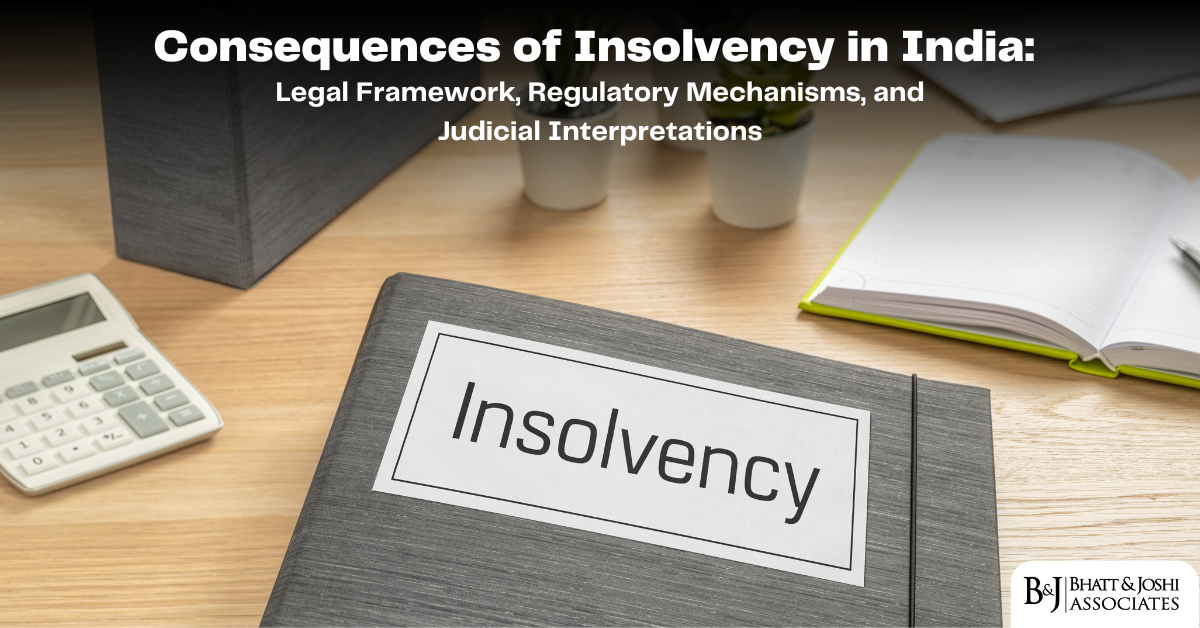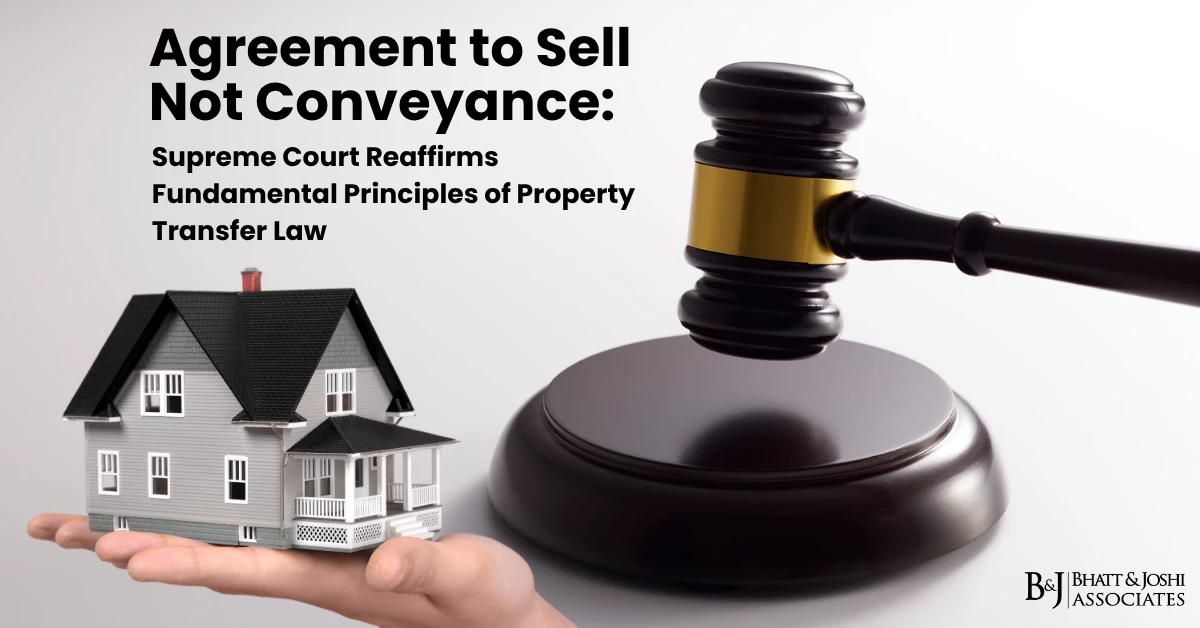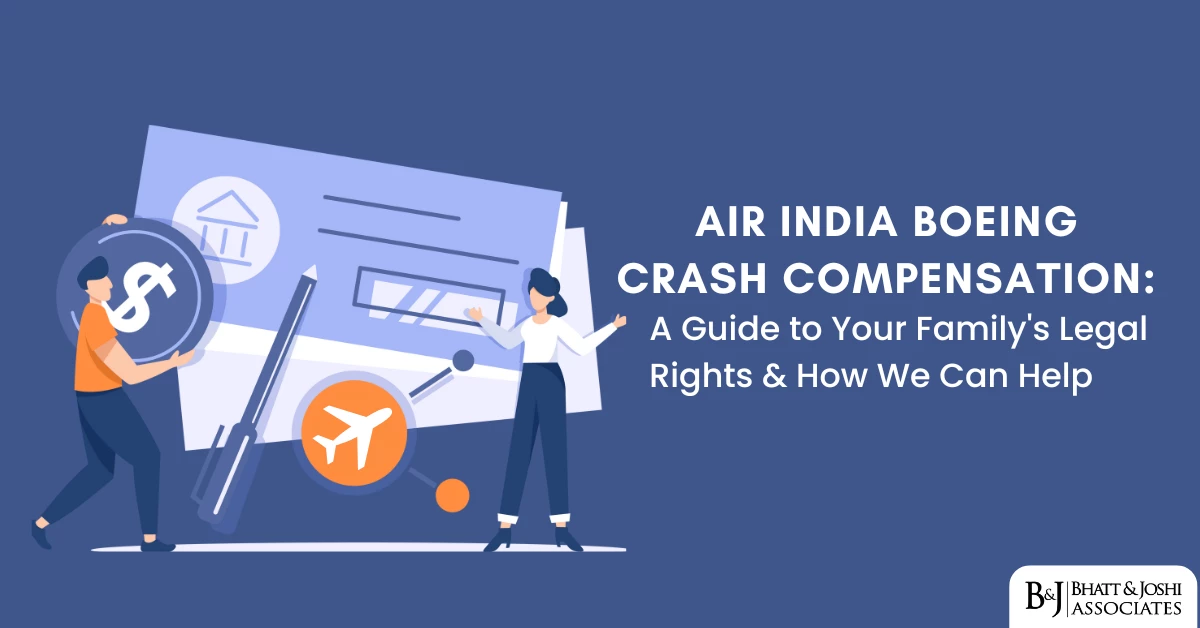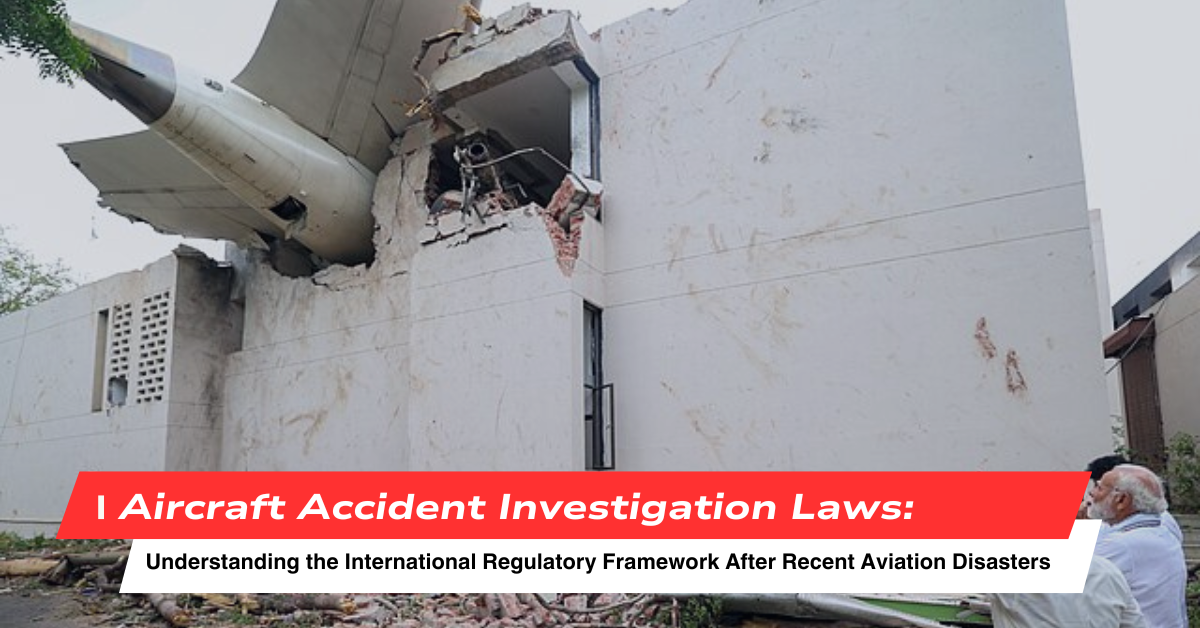Introduction
The landscape of insolvency and bankruptcy law in India underwent a paradigmatic transformation with the enactment of the Insolvency and Bankruptcy Code, 2016 (hereinafter referred to as “the Code” or “IBC”). The Insolvency and Bankruptcy Code, 2016 (IBC) is an Indian law which creates a consolidated framework that governs insolvency and bankruptcy proceedings for companies, partnership firms, and individuals. Prior to the Code’s implementation, India’s insolvency framework was characterised by fragmentation across multiple legislative instruments, including the Sick Industrial Companies (Special Provisions) Act, 1985, the Recovery of Debts Due to Banks and Financial Institutions Act, 1993, the Securitisation and Reconstruction of Financial Assets and Enforcement of Security Interest Act, 2002, and various provisions under the Companies Act, 2013. The consequences of insolvency under these earlier laws were often inconsistent and prolonged, highlighting the need for a streamlined and effective legal framework that the Code now provides.
The Code represents a comprehensive legal framework designed to consolidate and streamline insolvency resolution processes while ensuring time-bound resolution of financial distress. The Code aims to provide a time-bound process to resolve insolvency. When a default in repayment occurs, creditors gain control over debtor’s assets and must take decisions to resolve insolvency within a 180-day period. This transformative legislation seeks to maximise asset value recovery, promote entrepreneurship, facilitate credit availability, and balance the interests of all stakeholders in the insolvency ecosystem.
The consequences of insolvency under the Code vary significantly depending on whether the debtor is an individual, partnership firm, or corporate entity. Each category is subject to distinct procedural requirements, jurisdictional frameworks, and substantive legal outcomes. Understanding these differential consequences is crucial for legal practitioners, financial institutions, and business entities operating within India’s commercial landscape.
Historical Context and Legislative Evolution
Pre-IBC Framework
Before the Code’s enactment, India’s insolvency resolution mechanisms were characterised by significant inefficiencies and procedural delays. As of 2015, insolvency resolution in India took 4.3 years on average. This is higher when compared to other countries such as United Kingdom (1 year) and United States of America (1.5 years). The fragmented legal framework created overlapping jurisdictions, inconsistent procedures, and prolonged resolution timelines that undermined creditor confidence and impeded economic growth.
The Sick Industrial Companies (Special Provisions) Act, 1985 (SICA), which provided an insolvency resolution framework for industrial undertakings, had particularly failed to deliver effective outcomes. Similarly, the Recovery of Debts Due to Banks and Financial Institutions Act, 1993, while addressing specific banking sector concerns, lacked comprehensive coverage of modern commercial insolvency scenarios.
Genesis of the Code
The legislative genesis of the Code can be traced to the Bankruptcy Legislative Reforms Committee (BLRC) established by the Ministry of Finance on 22 August 2014. The Committee, headed by T.K. Viswanathan, was tasked with drafting comprehensive bankruptcy legislation. The Committee submitted its report, which included a draft bill, on 4 November 2015. Following extensive public consultation and parliamentary scrutiny through a Joint Parliamentary Committee, the Code received presidential assent and was notified in The Gazette of India on 28 May 2016.
Regulatory Framework and Institutional Architecture
Insolvency and Bankruptcy Board of India (IBBI)
The Code establishes the Insolvency and Bankruptcy Board of India, to oversee the insolvency proceedings in the country and regulate the entities registered under it. The IBBI serves as the apex regulatory authority responsible for regulating insolvency professionals, insolvency professional agencies, and information utilities. The Board comprises ten members, including representatives from the Ministries of Finance and Law, and the Reserve Bank of India, ensuring multi-stakeholder governance.
Adjudicating Authorities
The Code establishes a bifurcated adjudicating authority structure. For corporate insolvency matters, the National Company Law Tribunal (NCLT) serves as the primary adjudicating authority. In relation to insolvency matters of individuals and firms, the Adjudicating Authority shall be the Debt Recovery Tribunal (DRT) having territorial jurisdiction over the place where the individual debtor actually and voluntarily resides or carries on business or personally works for gain.
However, the jurisdictional framework becomes more complex regarding personal guarantors of corporate debtors. The Supreme Court held that personal guarantors are “a separate species of individuals, for whom the Adjudicating Authority was common with the corporate debtor to whom they had stood guarantee”. In other words, the Adjudicating Authority for both the corporate debtors and their personal guarantors would be the NCLT and not the DRT.
Default Thresholds and Triggering Mechanisms
Current Default Thresholds
One of the most significant recent developments in the Code’s implementation has been the substantial revision of default thresholds. The Union Finance & Corporate Affairs Minister Smt. Niramla Sitharaman on 24th March, 2020 announced several important relief measures taken by the Government of India in view of COVID-19 outbreak, especially on statutory and regulatory compliance matters related to several sectors. It is announcement that due to the emerging financial distress faced by most companies on account of the large-scale economic distress caused by COVID 19, it has been decided to raise the threshold of default under section 4 of the IBC 2016 to Rs 1 crore (from the existing threshold of Rs 1 lakh).
This hundred-fold increase in the minimum default threshold represents a fundamental shift in the Code’s application. Prior to this amendment, any default exceeding Rs. 1 lakh could trigger insolvency proceedings. The current threshold of Rs. 1 crore significantly narrows the scope of potential insolvency applications, particularly affecting small and medium enterprises and operational creditors.
Impact on Operational Creditors
Given the nature of debts due to operational creditors, it is unlikely that individual operational debts would equal or exceed Rs. 1 crore and thus, the said notification in effect wipes out majority of this class of creditors from seeking resolution under the provisions of the IBC. This threshold revision has created substantial challenges for operational creditors, who typically have smaller individual claims but collectively represent significant stakeholder interests.
Consequences of Insolvency for Individuals
Jurisdictional Framework for Individual Insolvency
Part III of Insolvency Code, 2016 deals with insolvency resolution and liquidation for individuals and firms. For individuals and firms, there are two distinct processes – fresh start and insolvency resolution. These are followed by bankruptcy order. Debt Recovery Tribunal (DRT) will be adjudicating authority and DRAT will be appellate authority for individuals and firms.
The Code provides for a comprehensive individual insolvency framework, though its full implementation remains pending. Currently, only provisions relating to personal guarantors of corporate debtors have been notified and made effective from 1 December 2019, leaving the broader consequences of insolvency for individuals still unfolding through phased implementation.
Fresh Start Process
The Code introduces an innovative “fresh start” mechanism designed for individuals with limited financial means. The ‘fresh start’ will apply to individuals whose income is below Rs. 5,000 per month and debt amount does not exceed Rs. 35,000. In their case, work of insolvency resolution will be handled mostly by ‘insolvency professional’. Appellate Authority (DRT) will have only supervisory role.
This mechanism represents a significant departure from traditional bankruptcy approaches, providing expedited relief for financially distressed individuals while maintaining creditor protections.
Insolvency Resolution Process for Individuals
For individuals who do not qualify for the fresh start process, the Code provides for a comprehensive insolvency resolution process. The debtor or creditor may file an application before the DRT seeking initiation of the insolvency resolution process. Upon admission, a resolution professional is appointed to manage the debtor’s affairs and formulate a repayment plan in consultation with creditors.
The resolution professional must prepare a repayment plan specifying the duration, manner, and amount of repayment by the debtor. The plan requires approval from a majority of creditors by value. If approved, the debtor becomes bound by the plan’s terms. If rejected or if the plan fails, bankruptcy proceedings may be initiated.
Bankruptcy Consequences for Individuals
Upon bankruptcy declaration, several significant consequences of insolvency follow:
Asset Vesting and Liquidation: All assets of the bankrupt individual vest in a bankruptcy trustee appointed by the DRT. The trustee assumes responsibility for liquidating assets and distributing proceeds among creditors according to the prescribed priority waterfall.
Personal Restrictions and Disabilities: The bankrupt individual becomes subject to various legal restrictions, including disqualification from holding certain public offices, restrictions on entering specific contracts, prohibition on creating charges over property, and travel restrictions requiring tribunal permission.
Discharge from Debts: The bankrupt will be discharged from his or her debts after a period of three years from the date of bankruptcy order, unless extended by the DRT for a maximum of two more years. The discharge will release the bankrupt from all liabilities in respect of his or her debts, except those that are non-dischargeable under the law, such as fraud, wilful default, maintenance obligations, etc.
Personal Guarantors of Corporate Debtors
The treatment of personal guarantors represents one of the most complex aspects of the Code’s individual insolvency provisions. Following the Supreme Court’s decision in Lalit Kumar Jain v. Union of India, the constitutional validity of provisions pertaining to personal guarantors has been upheld, despite initial challenges regarding their differential treatment compared to other individuals.
Personal guarantors are subject to insolvency proceedings under Part III of the Code, but their cases are adjudicated by the NCLT rather than the DRT when there is a nexus with corporate insolvency proceedings. This jurisdictional arrangement reflects the legislative intent to maintain unified proceedings for corporate debtors and their guarantors.
Consequences of Insolvency for Companies
Corporate Insolvency Resolution Process (CIRP)
The Corporate Insolvency Resolution Process represents the Code’s flagship mechanism for addressing corporate financial distress. Designed to ensure timely resolution, the process must be completed within 180 days from the date of admission, extendable by 90 days with creditor approval. One of the key consequences of insolvency under this mechanism is the suspension of the board of directors and transfer of management to an insolvency professional. This time-bound and structured approach marks a significant departure from the prolonged and inefficient proceedings that characterized pre-Code insolvency resolution.
Initiation of CIRP
CIRP can be initiated by financial creditors (Section 7), operational creditors (Section 9), or the corporate debtor itself (Section 10). The maximum time allowed to consider the application is 14 days. Upon admission, the NCLT declares a moratorium, appoints an interim resolution professional, and causes public announcement of the CIRP commencement.
The moratorium provision under Section 14 creates a comprehensive stay on all legal proceedings against the corporate debtor, providing breathing space for resolution efforts while preventing asset dissipation.
Role of Committee of Creditors (CoC)
The Committee of Creditors, comprising financial creditors, assumes central importance in determining the corporate debtor’s fate. The CoC evaluates resolution plans submitted by potential resolution applicants and makes commercial decisions regarding the company’s future. The Supreme Court has reiterated that it is ultimately the commercial wisdom of the CoC (as upheld in this case) which determines and approves the best resolution plan. This includes the “feasibility and viability” of a resolution plan, considering all aspects including the manner of distribution of funds among the various classes of creditors.
Resolution Plan Requirements
Resolution plans must comply with various statutory requirements, including providing for payment of insolvency resolution process costs, repayment of operational creditor debts (at least equal to liquidation value), and addressing the corporate debtor’s going concern status. The plan must also specify the manner of implementation and distribution of proceeds among various stakeholder classes.
Liquidation Process and Consequences of Insolvency
If no resolution plan is approved within the prescribed timeline, or if an approved plan fails implementation, the corporate debtor proceeds to liquidation. The liquidation process involves several critical consequences:
Liquidator Appointment and Asset Custody: The NCLT appoints a liquidator who assumes custody of all corporate debtor assets and undertakes their systematic liquidation through transparent sale processes.
Distribution Waterfall: The proceeds of the sale will be distributed among the stakeholders according to the priority of their claims, as specified in Section 53 of the IBC. The Section 53 waterfall prioritises insolvency resolution process costs, secured creditor dues, employee wages and dues, unsecured financial creditor claims, government dues, and finally equity holder interests.
Corporate Dissolution: Upon completion of the liquidation process and NCLT approval, the corporate debtor is dissolved, terminating its legal existence and releasing it from most liabilities, except those arising from fraud or malfeasance.
Recovery Actions Against Responsible Persons
The liquidator is empowered to initiate recovery actions against directors, promoters, and other persons responsible for the corporate debtor’s insolvency. This includes pursuing fraudulent or wrongful trading claims, preference payments, and other actionable transactions that may have prejudiced creditor interests.
Landmark Judicial Interpretations
Swiss Ribbons Pvt. Ltd. v. Union of India (2019)
The Supreme Court’s decision in Swiss Ribbons Pvt. Ltd. v. Union of India represents a watershed moment in Indian insolvency jurisprudence. The Supreme Court’s decision in Swiss Ribbons v. Union of India upholding the constitutionality of the provisions of the Insolvency and Bankruptcy Code, 2016 (IBC or the Code) is a landmark in the development of the Code.
The Court upheld the constitutional validity of various Code provisions, including the differential treatment of financial and operational creditors, the role of the Committee of Creditors, and the disqualification provisions under Section 29A. The judgment established crucial precedents regarding the limited judicial review of commercial decisions made by creditors and the Code’s overriding effect over other laws.
Committee of Creditors of Essar Steel India Limited v. Satish Kumar Gupta (2019)
The Essar Steel judgment provided critical clarification on several contentious issues under the Code. The Supreme Court upheld the differential treatment of Financial Creditors (“FC”) and OCs, underscoring the principle that equitable treatment is to be accorded only to similarly placed creditors or creditors in the same class. Further, the Court held that the Code does not provide for FCs and OCs to be paid the same amounts or percentages in order for any resolution plan to comply with the Code.
The judgment reinforced the supremacy of the Committee of Creditors’ commercial wisdom while establishing guardrails for judicial intervention in resolution plan assessment.
Personal Guarantor Jurisprudence
Recent judicial developments have clarified the jurisdictional framework for personal guarantor insolvency. The NCLAT New Delhi bench of Justice Ashok Bhushan (Judicial Member) and Mr. Arun Baroka (Technical Member) has held that an application under section 95 of the Insolvency and Bankruptcy Code (Code) against the personal guarantor is maintainable before the NCLT under section 60(1) of the code even if no CIRP or Liquidation process is initiated or pending against the corporate debtor before the NCLT.
This interpretation expands the scope of personal guarantor liability beyond situations where corporate insolvency proceedings are contemporaneously pending.
Contemporary Challenges and Regulatory Responses
COVID-19 Impact and Threshold Modifications
The COVID-19 pandemic necessitated significant regulatory adjustments to prevent widespread corporate insolvencies arising from economic distress. The substantial increase in default thresholds to Rs. 1 crore was accompanied by various other relief measures, including suspension of fresh insolvency applications during specified periods.
This move comes in the backdrop of the Covid-19 pandemic and is ostensibly geared towards protecting Micro, Small & Medium Enterprises (‘MSMEs’) from being pushed into insolvency during these trying times. However, this threshold revision has created unintended consequences for smaller creditors, particularly operational creditors who may lack effective recourse for debt recovery.
Sectoral Exclusions and Specific Frameworks
The Code’s application is subject to various sectoral exclusions, particularly for financial service providers. The government has indicated intentions to develop specialised insolvency frameworks for financial institutions, recognising their systemic importance and unique regulatory requirements.
Cross-Border Insolvency Considerations
While the Code includes provisions for cross-border insolvency, their implementation remains limited. The development of bilateral and multilateral frameworks for cross-border insolvency recognition represents an emerging area requiring regulatory attention.
Comparative Analysis with International Frameworks
Time-Bound Resolution Mechanisms
Introduction of Insolvency and Bankruptcy Code has brought down the average time for resolution processes from earlier 4-6 years to just around 317 days at present. Higher Recoveries: Recoveries are also higher: 45% after its introduction, against 26% before it. These improvements demonstrate the Code’s effectiveness in addressing historical inefficiencies in Indian insolvency resolution.
Creditor-in-Control Model
The Code adopts a creditor-in-control model where financial creditors assume primary decision-making authority through the Committee of Creditors. This approach contrasts with debtor-in-possession models prevalent in some jurisdictions and reflects policy choices favouring creditor interests in resolution outcomes.
Future Developments and Recommendations
Group Insolvency Framework
The development of group insolvency mechanisms represents a critical area for future legislative development. Complex corporate structures with interconnected entities require sophisticated resolution frameworks that can address cross-entity dependencies and optimise value recovery across corporate groups.
Enhanced Operational Creditor Protection
The substantial increase in default thresholds has created challenges for operational creditor recovery. Future reforms may need to address these concerns through alternative dispute resolution mechanisms or modified threshold structures that better balance stakeholder interests.
Technology Integration and Digital Processes
The integration of technology platforms for case management, asset sales, and stakeholder communication represents an opportunity for enhancing process efficiency and transparency. Digital transformation initiatives could significantly reduce resolution timelines and administrative costs.
Conclusion
The Insolvency and Bankruptcy Code, 2016, represents a transformative framework that has fundamentally altered India’s insolvency landscape. The differential consequences of insolvency for individuals and companies reflect nuanced policy choices designed to balance debtor rehabilitation with creditor protection. While the Code has achieved significant improvements in resolution timelines and recovery rates, ongoing challenges require continued regulatory attention and judicial interpretation.
The evolution of insolvency consequences under the Code demonstrates the dynamic nature of commercial law in responding to economic realities and stakeholder needs. As the insolvency ecosystem matures, the interplay between legislative provisions, regulatory guidance, and judicial interpretation will continue shaping the practical consequences of financial distress for all stakeholders in India’s commercial economy.
The Code’s success in establishing a robust insolvency framework positions India as a leading jurisdiction for insolvency law development. Continued refinement of the framework, informed by practical experience and international best practices, will ensure that the consequences of insolvency remain predictable, fair, and conducive to India’s broader economic development objectives.
References
- Swiss Ribbons Pvt. Ltd. & Anr. v. Union of India & Ors., (2019) 4 SCC 17
- Committee of Creditors of Essar Steel India Limited v. Satish Kumar Gupta & Ors., (2020) 8 SCC 531
- Lalit Kumar Jain v. Union of India & Ors., (2021) 9 SCC 321
- State Bank of India v. Mahendra Kumar Jajodia, 2022 SCC OnLine NCLAT 455
- Anand Rao Korada v. M/s. Varsha Fabrics (P) Ltd. & Ors., Civil Appeal Nos. 8800-8801 of 2019
- Insolvency and Bankruptcy Code, 2016 (31 of 2016)
- Ministry of Corporate Affairs Notification S.O. 1205(E) dated 24.03.2020
- Report of the Bankruptcy Legislative Reforms Committee, November 2015
- The Insolvency and Bankruptcy Board of India. Available at: https://www.ibbi.gov.in
- PRS Legislative Research, “The Insolvency and Bankruptcy Code, 2016: All you need to know” Available at: https://prsindia.org
PDF Links to Full Judgments
- https://bhattandjoshiassociates.s3.ap-south-1.amazonaws.com/judgements/25th-Jan-2019-in-the-matter-of-Swiss-Ribbons-Pvt.-Ltd.-and-Anr-Writ-Petition-Civil-No.37-99-100-115-459-598-775-822-849-and-1221-2018-In-Special-Leave-Petition-Civil-No.28623-of-2018_2019-01-25-13-58.pdf
- https://bhattandjoshiassociates.s3.ap-south-1.amazonaws.com/judgements/d46a64719856fa6a2805d731a0edaaa7.pdf
- https://bhattandjoshiassociates.s3.ap-south-1.amazonaws.com/judgements/Lalit_Kumar_Jain_vs_Union_Of_India_on_21_May_2021.PDF
- https://bhattandjoshiassociates.s3.ap-south-1.amazonaws.com/judgements/2022-01-28-124013-g0wpl-26414f3846632f4c82d397e67e510d1f.pdf
- https://bhattandjoshiassociates.s3.ap-south-1.amazonaws.com/judgements/Anand_Rao_Korada_Resolution_vs_M_S_Varsha_Fabrics_P_Ltd_on_18_November_2019.PDF
- https://bhattandjoshiassociates.s3.ap-south-1.amazonaws.com/judgements/the_insolvency_and_bankruptcy_code,_2016.pdf














